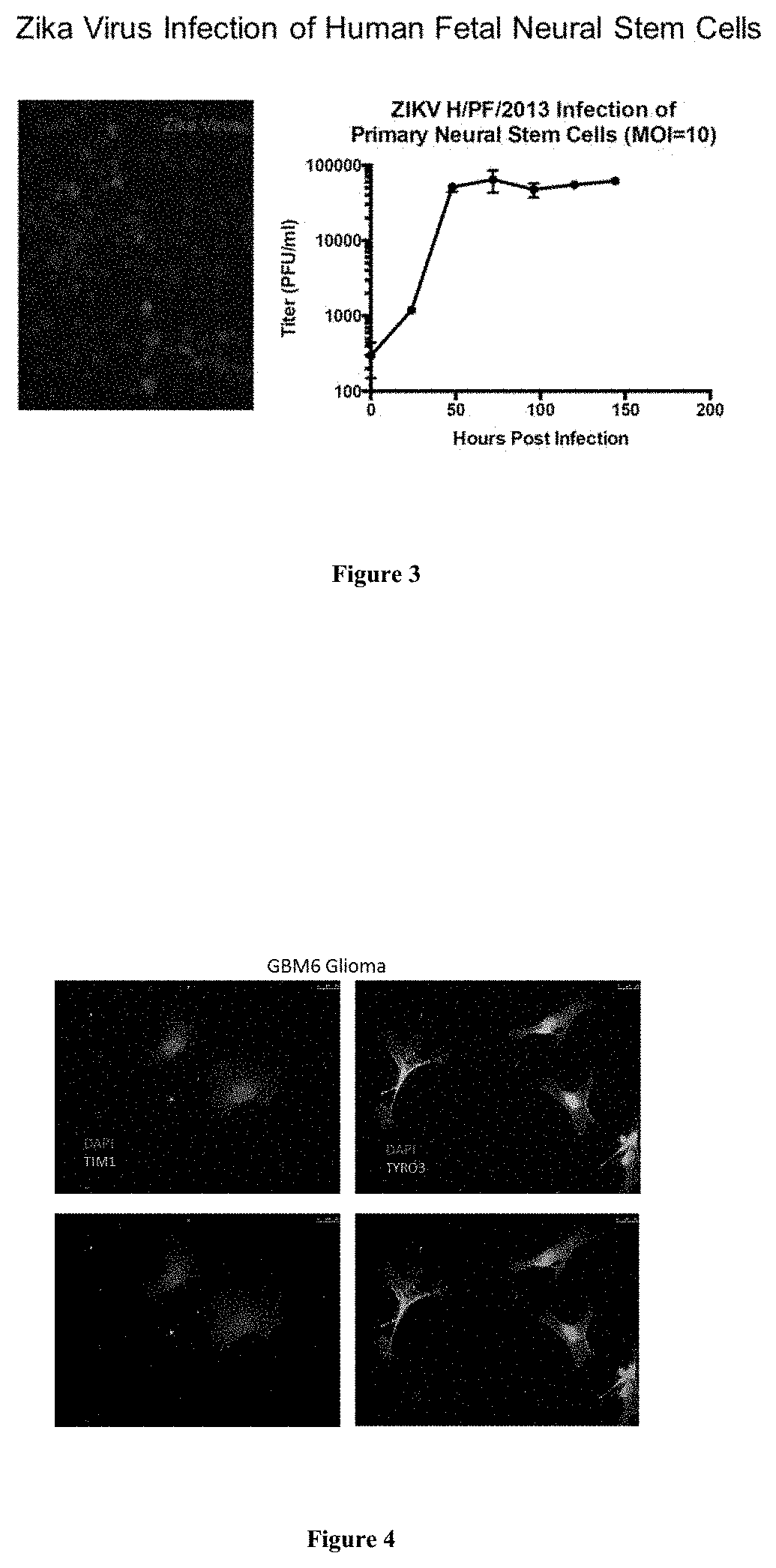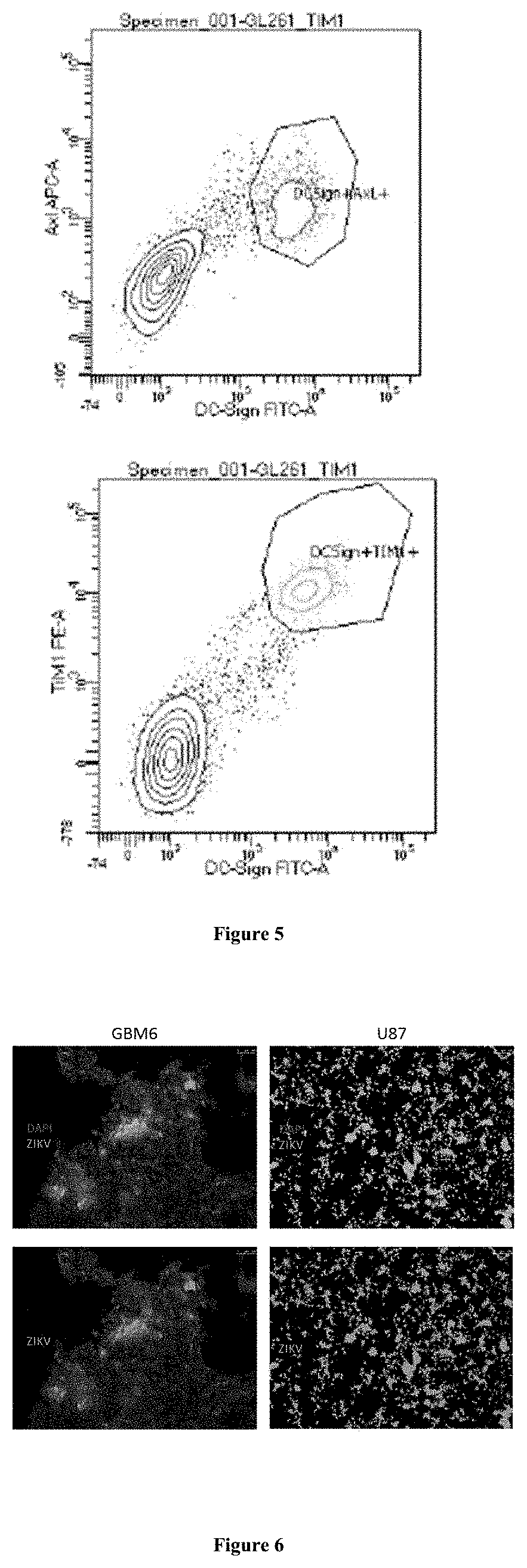Methods and compositions for treating glioma and medulloblastoma brain tumors using the zika virus
a technology of medulloblastoma and brain tumor, which is applied in the direction of drug compositions, viruses/bacteriophages, antibody medical ingredients, etc., can solve the problems of poor prognosis of gbm patients, poor “long-term” survival rate of gbm patients 5 years after diagnosis, and limited ability of non-activated t-cells to cross into the cns
- Summary
- Abstract
- Description
- Claims
- Application Information
AI Technical Summary
Benefits of technology
Problems solved by technology
Method used
Image
Examples
examples
[0143]The Zika Virus as an Oncolytic Virus and Vaccine Adjuvant
[0144]The Examples in the following section demonstrate that the human neural stem cells from the fetal brain express putative Zika virus receptors to which the virus can bind and enter the cells. The similarities between neural stem cells and brain tumor stem cells led us to postulate that the latter cells may also be susceptible to infection by the Zika virus. We provide examples on the infectivity of brain tumor cells by the Zika virus.
[0145]In spite of the dramatic malformations of the brain that occur in the developing human fetal brain that result from the infection of neural stem cells, adults who are infected by the Zika virus typically have a relatively benign course of illness with fever, rash, joint pain, and conjunctivitis (Duffy et al., 2009). A recent study, however, suggests that approximately 1% of adults infected with the Zika virus in South America experience some symptoms similar to Guillain-Barre Synd...
PUM
| Property | Measurement | Unit |
|---|---|---|
| volume | aaaaa | aaaaa |
| median survival time | aaaaa | aaaaa |
| median survival time | aaaaa | aaaaa |
Abstract
Description
Claims
Application Information
 Login to View More
Login to View More - R&D
- Intellectual Property
- Life Sciences
- Materials
- Tech Scout
- Unparalleled Data Quality
- Higher Quality Content
- 60% Fewer Hallucinations
Browse by: Latest US Patents, China's latest patents, Technical Efficacy Thesaurus, Application Domain, Technology Topic, Popular Technical Reports.
© 2025 PatSnap. All rights reserved.Legal|Privacy policy|Modern Slavery Act Transparency Statement|Sitemap|About US| Contact US: help@patsnap.com



